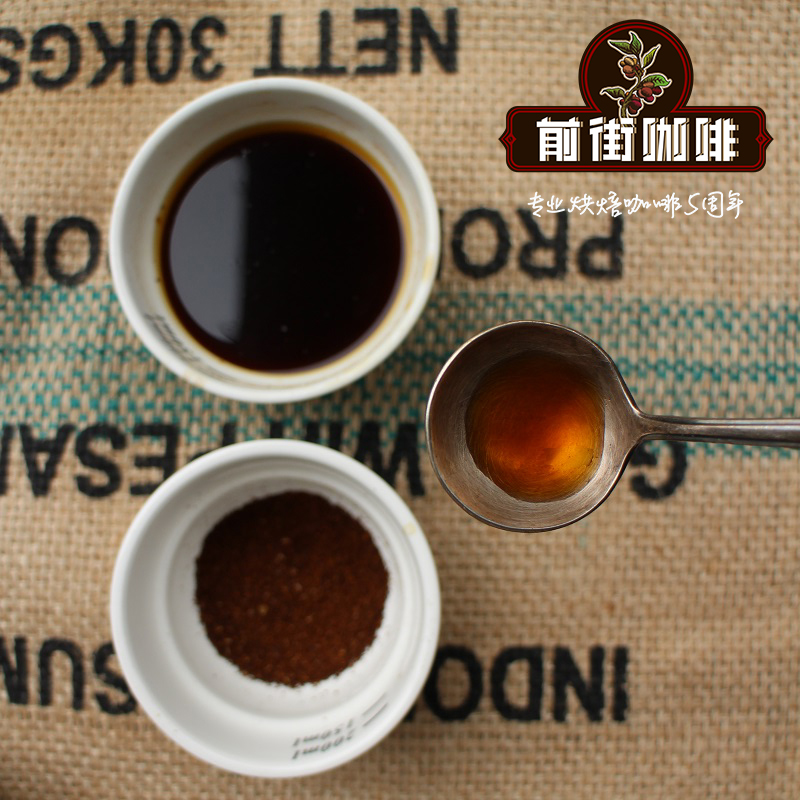What is caffeic acid? what is the composition of caffeic acid? how does it affect coffee flavor?

Professional coffee knowledge exchange more coffee bean information please follow the coffee workshop (Wechat official account cafe_style)
There are many factors that affect coffee flavor: coffee bean varieties, roasting conditions, brewing strategies, coffee bean treatment methods. However, when you divide these factors again and again, in the end, the coffee flavor is dependent on a class of substances-compounds.
These compounds are affected by the way coffee is roasted, the type of beans, and the altitude at which coffee grows. But if you want to really optimize the flavor of coffee, you need to understand the science behind it.
Aroma, flavor, aftertaste, acidity and alcohol thickness-all five properties correspond to different compounds. On the cup table, we interpret them with our senses-even then, the chemical reaction is still going on. We evaluate the dried incense, followed by the aroma of broken dregs, and then the taste. Different stages, different chemical molecules.
At the same time, we pay attention to a variety of compounds in coffee and their interactions. From carbohydrates to caffeine, there are many non-volatile compounds that affect flavor and quality. The proportion of these compounds varies depending on the quality of raw coffee beans-but keep in mind that the chemical composition of raw coffee beans is completely different from that of ripe coffee beans.
The ingredients of coffee beans include caffeine, tannic acid, fat, protein, sugar (carbohydrates), minerals and so on. The sugar in coffee beans brings sweetness, tannins and fatty acids bring sour taste, volatile fat brings aroma, and caffeine bitterness. Most of the bitterness of coffee comes from the flavor produced by roasting and caramelization. Usually, the deeper the baking, the more caramelization, resulting in more bitterness.
Chlorogenic acid (chlorogenic acid), tannin is a certain organic acid in coffee beans. Although it is one of the sources of bitter taste, it is also an antioxidant that is helpful to the cardiovascular system and metabolism of the human body. Good baking level and proper brewing method can not only improve the sweetness of coffee, but also adjust the acidity caused by chlorogenic acid. A cup of delicious coffee comes from this.
Introduction of chlorogenic acid
Coffee contains caffeine, chlorogenic acid, nicotinic acid and other chemical components. Chlorogenic acid (Chlorogenic acid) is one of the polyphenols and tannins, which is roasted into caffeic acid (caffeic acid), quinic acid (quinic acid,quinine) and formic acid (formic acid). It has the effect of antioxidation, scavenging free radicals, anti-bacteria and anti-inflammation, antivirus, reducing blood sugar, reducing blood lipid and protecting liver and spleen. Chlorogenic acid has a significant effect on diabetes.
If you want to get the most chlorogenic acid from coffee, it is best to drink light-roasted coffee, because the content of chlorogenic acid decreases with the roasting time.
Important Notice :
前街咖啡 FrontStreet Coffee has moved to new addredd:
FrontStreet Coffee Address: 315,Donghua East Road,GuangZhou
Tel:020 38364473
- Prev

Cognition of coffee composition.-Why is there caffeic acid? good caffeic acid?
Professional coffee knowledge exchange more information about coffee beans please follow the coffee workshop (Wechat official account cafe_style) first: the acid that already exists in fruit is precisely the acid of fruit. The normal entrance of fruit acid should be melted immediately, the acid must be round, and the acid should be able to bring out sweetness and sweetness. Fruit acid is ripe, fruit acid to have a sense of health, Sheng Jin will have the effect of quenching thirst. Fruit acid is necessary
- Next

Understand the flavor and taste of coffee in Cuba's famous producing areas. Three major brands of Cuban coffee.
Professional coffee knowledge exchange more information about coffee beans Please follow the coffee workshop (Wechat official account cafe_style) Cuba, which has been growing coffee since 1820, is famous for its high quality coffee and has a long history. At that time, coffee beans were the number one exporter in the country, more than the sugar necessary for daily life, due to government policy and the chaos of the international political situation in the late 19th century.
Related
- Beginners will see the "Coffee pull flower" guide!
- What is the difference between ice blog purified milk and ordinary milk coffee?
- Why is the Philippines the largest producer of crops in Liberia?
- For coffee extraction, should the fine powder be retained?
- How does extracted espresso fill pressed powder? How much strength does it take to press the powder?
- How to make jasmine cold extract coffee? Is the jasmine + latte good?
- Will this little toy really make the coffee taste better? How does Lily Drip affect coffee extraction?
- Will the action of slapping the filter cup also affect coffee extraction?
- What's the difference between powder-to-water ratio and powder-to-liquid ratio?
- What is the Ethiopian local species? What does it have to do with Heirloom native species?

